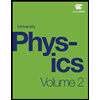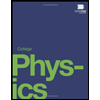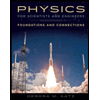Three charges are arranged as shown in the figure below. Find the magnitude and direction of the electrostatic force on the charge q = 4.76 nC at the origin. (Let r12-0 6.00 nC 0.100 m -3.00 nC magnitude Your incorrect answer may have resulted from roundoff error. Make sure you keep extra significant figures in intermediate steps of your calculation. N direction Enter a number. jagram and determine which quadrant contains the angle of the net force.o counterclockwise from the +x-axis
Three charges are arranged as shown in the figure below. Find the magnitude and direction of the electrostatic force on the charge q = 4.76 nC at the origin. (Let r12-0 6.00 nC 0.100 m -3.00 nC magnitude Your incorrect answer may have resulted from roundoff error. Make sure you keep extra significant figures in intermediate steps of your calculation. N direction Enter a number. jagram and determine which quadrant contains the angle of the net force.o counterclockwise from the +x-axis
Chapter5: Electric Charges And Fields
Section: Chapter Questions
Problem 52P: Suppose Earth and the Moon each carried a net negative charge Q . Approximate both bodies as point...
Related questions
Question
100%
Three charges are arranged as shown in the figure below. Find the magnitude and direction of the electrostatic force on the charge q = 4.76 nC at the origin. (Let r12 = 0.240 m.)
Three point charges lie along the axes in the x y-coordinate plane.
Positive charge q is at the origin.
A charge of 6.00 nC is at (r1 2, 0), where r1 2 > 0.
A charge of −3.00 nC is at (0, −0.100 m).

Transcribed Image Text:Three charges are arranged as shown in the figure below. Find the magnitude and direction of the electrostatic force on the charge q = 4.76 nC at the origin. (Let r12-0
6.00 nC
0.100 m
-3.00 nC
magnitude
Your incorrect answer may have resulted from roundoff error. Make sure you keep extra significant figures in intermediate steps of your calculation. N
direction
Enter a number. jagram and determine which quadrant contains the angle of the net force.o counterclockwise from the +x-axis
Expert Solution
This question has been solved!
Explore an expertly crafted, step-by-step solution for a thorough understanding of key concepts.
This is a popular solution!
Trending now
This is a popular solution!
Step by step
Solved in 5 steps with 4 images

Knowledge Booster
Learn more about
Need a deep-dive on the concept behind this application? Look no further. Learn more about this topic, physics and related others by exploring similar questions and additional content below.Recommended textbooks for you


College Physics
Physics
ISBN:
9781938168000
Author:
Paul Peter Urone, Roger Hinrichs
Publisher:
OpenStax College

Physics for Scientists and Engineers: Foundations…
Physics
ISBN:
9781133939146
Author:
Katz, Debora M.
Publisher:
Cengage Learning


College Physics
Physics
ISBN:
9781938168000
Author:
Paul Peter Urone, Roger Hinrichs
Publisher:
OpenStax College

Physics for Scientists and Engineers: Foundations…
Physics
ISBN:
9781133939146
Author:
Katz, Debora M.
Publisher:
Cengage Learning